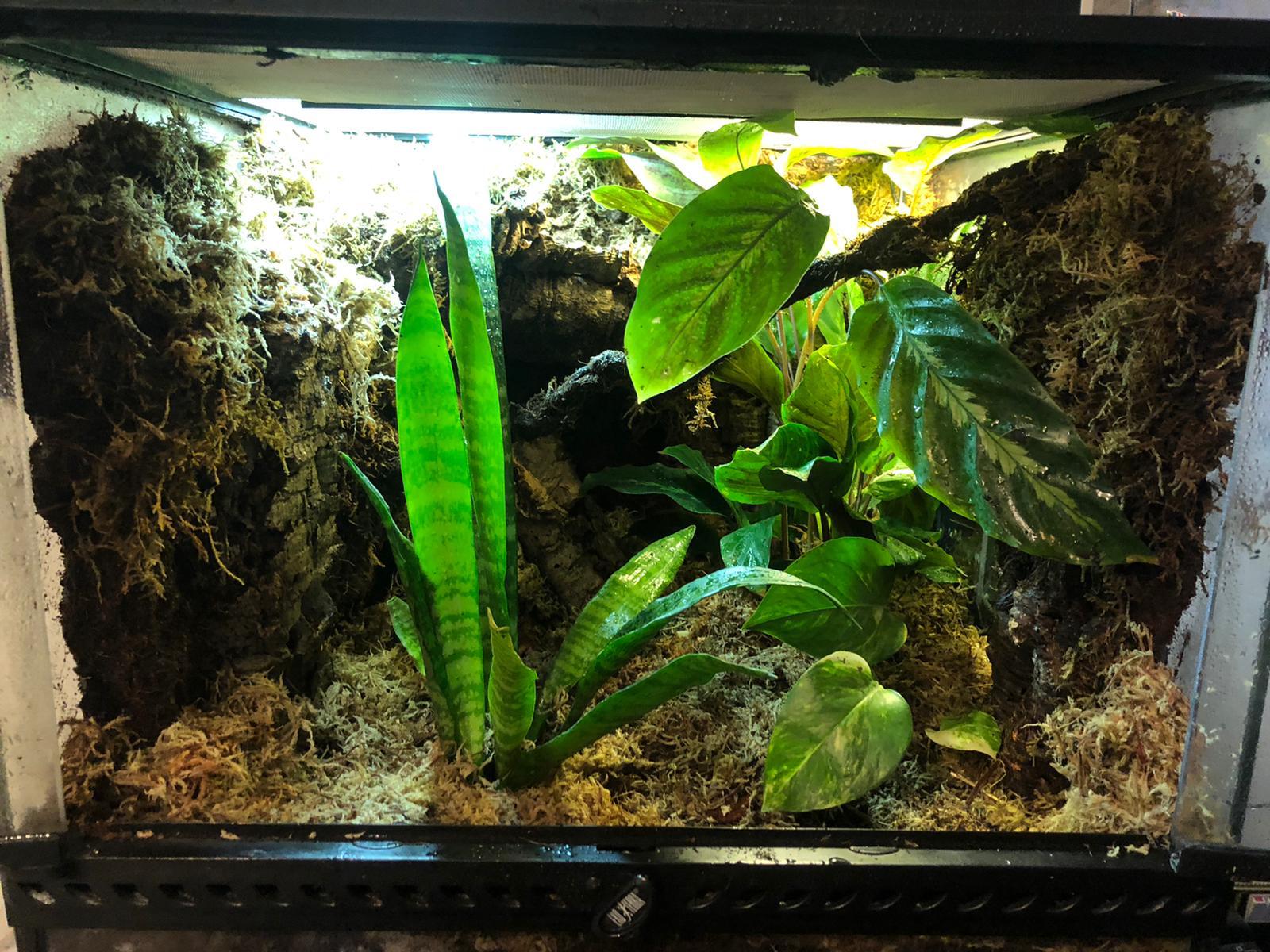Bioactive terrariums have become increasingly popular among reptile owners as they provide a more natural and enriching environment for their pets. A bioactive terrarium is a self-sustaining ecosystem that includes live plants, microorganisms, and a clean-up crew to help maintain the enclosure. In this article, we’ll go over how to make a bioactive terrarium specifically for crested geckos, including the necessary materials and step-by-step instructions.
Why Choose a Bioactive Terrarium for Your Crested Gecko
Crested geckos are arboreal creatures that spend most of their time in trees. In captivity, they require a vertical living space that provides ample climbing opportunities. Bioactive terrariums mimic the natural habitat of crested geckos and offer many benefits over traditional enclosures.
Firstly, bioactive terrariums promote the physical and psychological health of crested geckos. They allow for natural behaviors such as climbing and hiding, which can reduce stress and increase activity levels. Secondly, the live plants in bioactive terrariums help to improve air quality and reduce humidity levels, creating a healthier environment for your pet. Finally, the clean-up crew of insects and microorganisms help to maintain the enclosure by breaking down waste and preventing the buildup of harmful bacteria.
Materials Needed for a Bioactive Terrarium
- Terrarium (minimum size 45cm x 45cm x 60cm)
- Substrate (organic soil, coco coir, sphagnum moss)
- Live plants (such as Pothos, Bromeliads, and Philodendrons)
- Branches, vines, and other climbing structures
- Water dish
- Food dish
- Lighting (UVB and basking light)
- Heating source (such as a heat mat or ceramic heat emitter)
- Clean-up crew (such as springtails, isopods, and earthworms)
Step-by-Step Instructions for Creating a Bioactive Terrarium for Your Crested Gecko
- Choose the right size terrarium: The minimum size for a crested gecko enclosure is 45cm x 45cm x 60cm. This size allows for ample climbing space and provides a comfortable living environment for your pet.
- Create a substrate: Use a combination of organic soil, coco coir, and sphagnum moss to create a substrate that’s at least 2-3 inches deep. This will provide a comfortable and natural environment for your gecko to burrow and hide.
- Add live plants: Choose plants that are safe for your crested gecko and can thrive in the tropical environment of the terrarium. Pothos, Bromeliads, and Philodendrons are excellent choices as they are easy to care for and can help to maintain humidity levels.
- Install climbing structures: Add branches, vines, and other climbing structures to the terrarium to provide ample opportunities for your gecko to climb and explore.
- Install water and food dishes: Provide a water dish and a food dish that are easily accessible for your gecko.
- Install lighting and heating: Install a UVB light and a basking light to provide the necessary light and heat for your gecko. A heat mat or ceramic heat emitter can also be used to provide additional heat.
- Add the clean-up crew: Add a variety of insects and microorganisms to help maintain the enclosure. Springtails, isopods, and earthworms are all excellent choices.
- Monitor and maintain the enclosure: Regularly monitor the enclosure to ensure that temperature and humidity levels are within the appropriate range. Remove any uneaten food and waste to prevent the buildup of harmful bacteria.
Crested Gecko Bio Terrarium FAQs
Q: How often do I need to water the live plants in a bioactive terrarium? A: This depends on the specific plants and the environment of your terrarium. Generally, it’s recommended to water once a week or as needed to keep the substrate moist but not saturated. Overwatering can lead to mold and other issues.
Q: Do I need to add additional supplements to the substrate in a bioactive terrarium? A: If your crested gecko is getting a balanced diet, additional supplements may not be necessary. However, it’s always a good idea to consult with a veterinarian or reptile expert to determine if your specific gecko requires any additional supplementation.
Q: Can I use a screen top for a bioactive terrarium? A: It’s generally recommended to use a solid top or cover for bioactive terrariums, as the humidity levels need to be maintained to support the live plants and clean-up crew. Screen tops can allow for too much moisture loss and may require additional misting or other maintenance.
Q: Can I add other species to a bioactive terrarium with my crested gecko? A: It’s generally not recommended to mix species in a bioactive terrarium, as different animals may have different requirements or may be incompatible. Stick to just one species in your enclosure.
Q: How do I know if my clean-up crew is doing their job in a bioactive terrarium? A: You may notice that waste is breaking down and disappearing over time, which is a good indication that the clean-up crew is active and healthy. You can also spot check areas of the enclosure to make sure there isn’t an excess buildup of waste or uneaten food.

